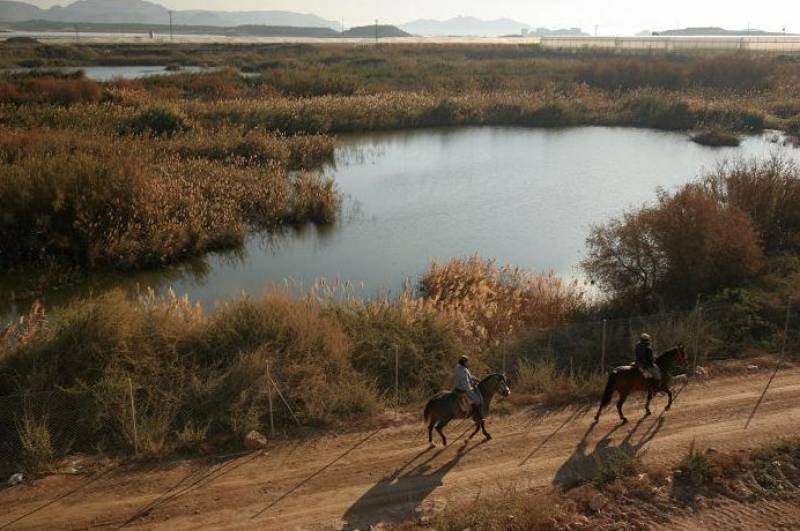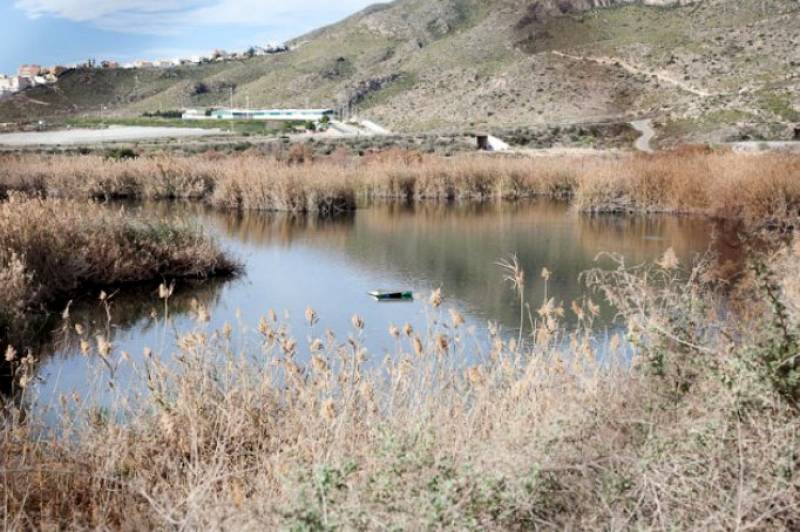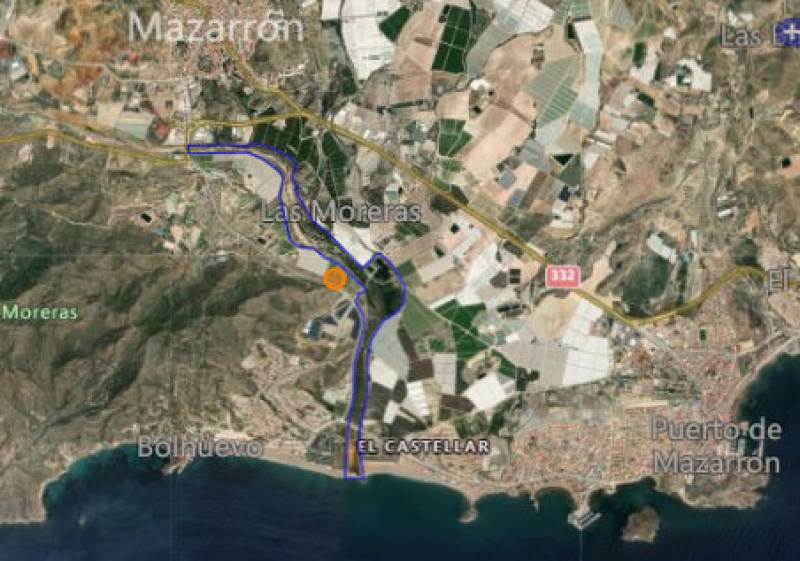The wetlands of Las Moreras in Mazarron
A protected nature reserve and Ramsar site between Mazarrón and Puerto de Mazarrón
 The landscape in and around Mazarrón is generally dry, but there is a pocket of 72 hectares of land near the coast between Puerto de Mazarrón and Bolnuevo which has been included in the Ramsar network of wetlands throughout the world.
The landscape in and around Mazarrón is generally dry, but there is a pocket of 72 hectares of land near the coast between Puerto de Mazarrón and Bolnuevo which has been included in the Ramsar network of wetlands throughout the world.
The wetlands of Las Moreras occupy the final stretch of the rambla (an irregular stream which fills with water only in times of heavy rain) of Las Moreras, leading into the Mediterranean. At the mouth of the rambla typical halophytic vegetation of European interest can be found and the site also includes an artificial pond which was created from a former gravel pit used as a water storage area.
The site, close the prehistoric remains on the Cabezo del Plomo, is an important area for wintering, staging and reproduction of many species of waterfowl, including the internationally endangered White-headed Duck (Oxyura leucocephala) and the vulnerable Marbled Teal (Marmaronetta angustirostris) both of which nest here.
 Las Moreras also offers a much-needed habitat to various species of fish, amphibians, reptiles, mammals and invertebrates, including endemic and threatened species such as the Spanish Toothcarp (Aphanius iberus), endemic to the Iberian Peninsula.
Las Moreras also offers a much-needed habitat to various species of fish, amphibians, reptiles, mammals and invertebrates, including endemic and threatened species such as the Spanish Toothcarp (Aphanius iberus), endemic to the Iberian Peninsula.
The site is of cultural and archaeological significance and is being used for small-scale sheep grazing, research, environmental education and some bird-watching tourism: it is also a popular area among hikers and there are plans for the construction of a bird observatory, as apart from the above-mentioned species it is also possible to see cormorants, herons and birds of prey.
 Threats to the site include erosion and silting, agricultural pollution as well as invasive species. In order to protect it, visitors are asked not to disturb the water birds, not to pick flowers and plants, not to stray of the signposted paths, not to light fires and not to leave rubbish on the ground.
Threats to the site include erosion and silting, agricultural pollution as well as invasive species. In order to protect it, visitors are asked not to disturb the water birds, not to pick flowers and plants, not to stray of the signposted paths, not to light fires and not to leave rubbish on the ground.
The Ramsar Convention on Wetlands is an intergovernmental treaty that provides the framework for national action and international cooperation for the conservation and wise use of wetlands and their resources.
Ramsar Site number: 2036.
Number of Contracting Parties: 172
Number of Wetlands of International Importance: 2,471
Total surface of designated sites: 256,192,356 hectares
For more local information go to the home page of Mazarrón Today.















